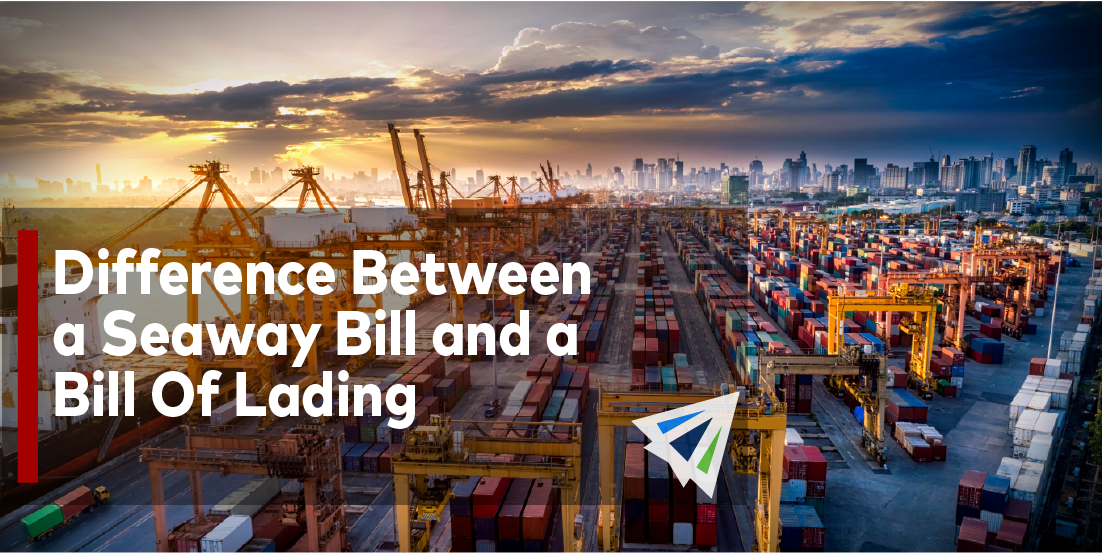We have talked a lot about Bills Of Lading in the past – it seems to be one of the most popular topics that international shippers are searching for answers on! Bills Of Lading are incredibly important in international shipping, and if you don’t have a clear grasp on their importance, how to use them, and the implications of their activity at each stage of the shipping process, you’ll be in trouble. We’ve written plenty of blog posts about House Bills Of Lading and Master Bills Of Lading in the past.
However, another popular topic related to Bills Of Lading is Seaway Bills. What are Seaway Bills and how do they work? Here’s a high-level summary of how they work and why they are necessary in certain situations:
Seaway Bill vs Bill Of Lading
The role of the Seaway Bill and Bill Of Lading is actually incredibly similar. But while there are only subtle differences, the implication of those differences is grand. Before discussion the differences between the two in detail, here is the gist of it:
A Bill Of Lading serves 3 primary purposes:
- Contract of Carriage: Indicates that the goods have been loaded onto the appropriate vessel for departure.
- Receipt of the Goods: Indicates the specifics of what cargo is being shipped, where to, etc.
- Transfer of Title Ownership: Whoever is in possession of the Bill Of Lading is the owner of the cargo. When the Bill Of Lading is transferred from the shipper to the buyer, ownership of the cargo is also transferred.
The primary difference between a Bill Of Lading and a Seaway Bill is that a Seaway Bill only serves two of those three functions. A Seaway Bill acts as a Contract Of Carriage and a Receipt of the Goods, but not as a Transfer of Title Ownership. Why? Here’s a summary of each:
Bill Of Lading
As stated, the Bill Of Lading serves the above three purposes. It indicates all the details that pertain to a shipment – what is actually being shipped, where it’s being shipped too, etc., and it also serves as a notification that the goods are on their way.
But when it comes to Bills Of Lading, possession of the Original Bill Of Lading is incredibly important. That original document carries the title of “ownership.” That’s incredibly important, as any mishaps along the way during a shipping process are the fault of the one who owns the cargo – which, as stated, is the one who is in possession of the original Bill Of Lading document.
So while a Bill Of Lading (BOL) has several benefits related to the details of a shipment, it also serves a security purpose. It’s a form of insurance, security, and legal definition during the shipping process.
Seaway Bill
A Seaway Bill, as stated, serves only the first two functions that a regular Bill Of Lading does – Contract Of Carriage, and Receipt of the Goods. However, it does not serve the purpose of being a Title Of Ownership for the goods being shipped. Why not?
Well, usually Seaway Bills are used when the shipper has already chosen to sacrifice ownership of the cargo before the shipment even begins. So, the customer purchases the cargo and works it out with the shipper that the cargo is now the buyer’s responsibility. Since this detail is already worked out, there is no reason to deal with an official BOL. So the shipper and buyer both agree to use a Seaway Bill. This speeds up the shipping process since neither party has to wait for the BOL to be received in order for the shipment to progress.
For this reason, Seaway Bills are often used interchangeably with the terms “Express Bill Of Lading” or “Straight Bill Of Lading”.
Wrapping It Up
The difference is simple but important. BOL’s are crucial to understand while shipping – you don’t want to end up paying a freight bill for broken or damaged cargo when you weren’t aware in the first place that you were responsible. If you find yourself in this situation and have questions about what to do next, please don’t hesitate to reach out to one of our team members! Our team is incredibly knowledgeable on Bills Of Lading, Master Bills Of Lading, and Seaway Bills, and we are happy to answer any questions you or your team may have regarding your current or future shipping practices!
